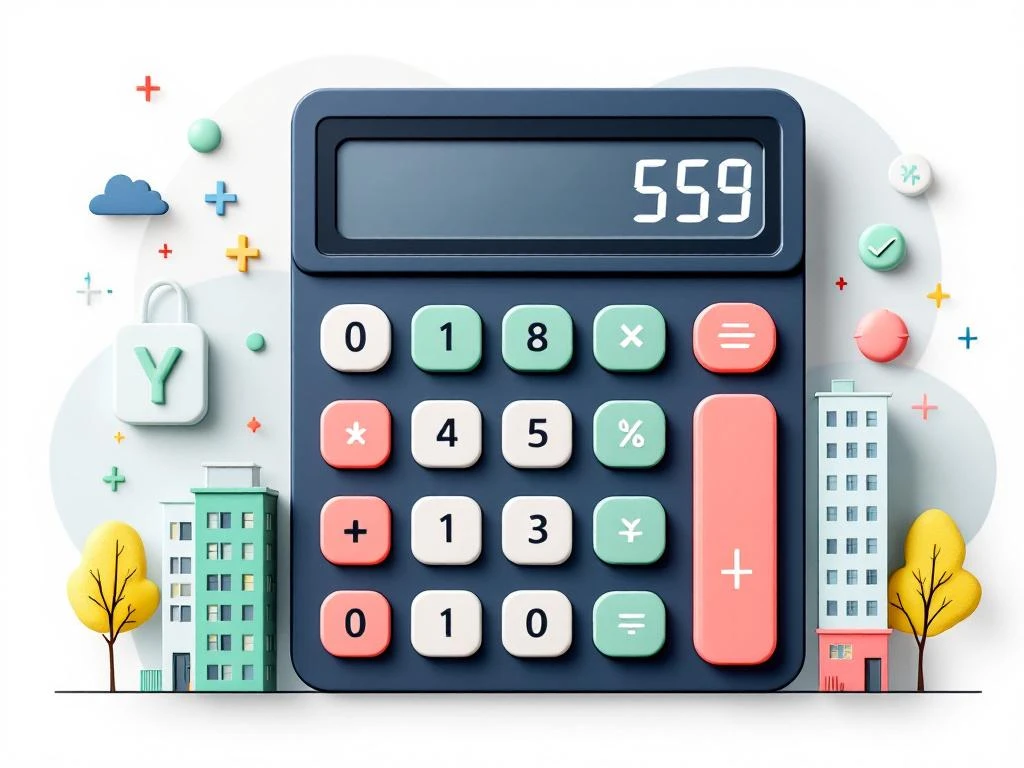You calculate the value of a leased property by dividing the annual rental income by the desired return. For a property with €24,000 annual rent and a desired return of 6%, the value is €400,000. This calculation is the basis, but you must also consider factors such as location, state of repair, type of lease and market conditions. The rental value is usually lower than the vacant value because buyers consider sitting tenants.
What determines the value of a leased property?
The value of a leased property is determined by five main factors: location, rental income, condition of the property, type of lease and market conditions. Location remains the most important factor, especially in popular cities where you can office space for rent Amsterdam often yields higher returns than in smaller municipalities.
Rental income is the direct basis for valuation. A stable tenant with long-term contract makes your property more attractive to investors. The state of maintenance determines not only the current rent, but also future investments. A well-maintained property with modern amenities justifies higher rents and has lower maintenance costs.
The type of lease has a major impact on value. Commercial leasing usually offers more flexibility than residential leasing with strict rent protection. Market conditions determine the returns investors expect. In a tight market, buyers accept lower returns, which increases the value of your rental property.
The difference between vacant value and rented value can be significant. A leased property often has a lower market value because new owners are bound by existing leases. This difference varies widely by situation, but can be as much as 10-30% of the vacant value.
How do you calculate the value using the BAR method?
The Gross Initial Yield (BAR) method is the most commonly used valuation method for leased properties. You calculate the BAR by dividing the annual rent by the purchase price and multiplying this by 100%. For valuation, you reverse this formula: divide the annual rent by the desired return.
Suppose you have an office building with an annual rent of €36,000. With a desired return of 7%, you calculate the value as follows: €36.000 / 0,07 = €514.285. This gives you a first indication of the market value. Please note that you use the gross annual rent, i.e. excluding service costs but including any parking spaces.
Realistic rates of return vary by property type and location:
| Property type | Return on A-locations | Yield B sites |
|---|---|---|
| Offices | 5-7% | 7-9% |
| Stores main street | 4-6% | 6-8% |
| Premises | 6-8% | 8-10% |
| Housing | 3-5% | 5-7% |
These percentages apply to stable rentals with reliable tenants. For short-term leases or uncertain tenants, increase the return by 1-2% to compensate for risk.
What is the difference between vacant value and rental value?
Empty value is the price you get for a property without tenants, while rental value is the price with sitting tenants. Empty value is usually higher because buyers have complete freedom over use. With rental value, you are bound by existing contracts and rent protection.
For homes, this difference is greatest because of strict rent protection. A buyer cannot occupy the property himself or sell it freely, which depresses the value. For commercial properties, the difference is smaller because leases are more flexible. A well-leased store in a prime location may even be worth more than empty because the rental flow is guaranteed.
Advantages of rental value are immediate income and no vacancy risk. Disadvantages are limited flexibility and possibly lower selling price. Marketability depends on your target market: investors look for rental properties, individuals usually want empty properties.
The difference in value varies widely by situation. For properties with old leases and low rents, the rental value can be 70% of the vacant value. For recently leased offices at market rates, the difference is often only 5-10%.
Which leases affect value the most?
Long-term commercial leases with solid tenants have the most positive impact on property values. These contracts provide security of income and make financing easier. Banks value stable rental streams and offer better mortgage terms.
Temporary rentals and open-ended contracts have different effects. Temporary contracts give flexibility but create uncertainty about future income. This depresses value by 5-15%. Open-ended contracts in housing provide tenants with strong protection, which negatively affects value.
Commercial rentals have less rent protection than residential rentals. After the contract period expires, you can negotiate new terms or terminate the lease. This flexibility makes commercial real estate more attractive to investors. ROZ (Real Estate Council) contracts are standard and offer clear agreements on termination and renewal.
Contract length directly affects valuation. A 10-year contract with a reliable tenant increases the value significantly. Shorter contracts or month's notice reduce the value because the risk profile is higher. Investors then charge higher returns to compensate for this risk.
How do you use the capitalization method for valuation?
The capitalization method discounts future rental income to present value. You calculate the value by dividing the net annual income by the capitalization factor. This method is more accurate than BAR because you factor in operating expenses.
The formula is: Value = Net rental income / Capitalization factor. Net rental income is calculated by subtracting from the gross annual rent all owner expenses such as property taxes, insurance, management costs and maintenance. For an office building with €50,000 gross annual rent and €8,000 expenses, the net income is €42,000.
A practical example: with a capitalization factor of 6% (0.06), the value is €42,000 / 0.06 = €700,000. You determine the capitalization factor based on comparable transactions, location, property quality and market situation. The lower the risk, the lower the factor.
To determine the right capitalization factor, look at reference transactions, ask brokers for market information and analyze the specific risk profile. Modern office space with long-term tenants warrants a lower factor than aging space with uncertain leases. If you want to learn more about the finding the perfect business space, this also helps you estimate market values.
When do you need a professional appraisal?
A professional appraisal is needed for mortgage applications, sales, inheritance issues, divorce or tax matters. Banks only accept validated appraisals from certified appraisers for financing. An official appraisal report is also necessary in disputes over value.
The difference between a validated appraisal and a valuation is important. A validated appraisal follows strict guidelines of the NRVT (Dutch Register of Real Estate Appraisers) and is legally valid. A valuation is an estimate without formal status, often used for exploratory talks.
Appraisal fees vary by property and appraiser. You pay more for commercial property than residential because of the complexity. An appraiser examines location, structural condition, leases, market conditions and comparable transactions. The report includes extensive substantiation of the valuation.
The appraiser also checks legal aspects such as zoning, environmental aspects and easements. For leased properties, he analyzes lease contracts, creditworthiness of tenants and market rents. This thorough analysis provides assurance about the true value of your property.
How do you compare leased properties in the market?
Market analysis starts with collecting comparable transactions in the area. Online databases such as Funda, PropertyNL and local NVM brokers offer information on recently sold properties. Filter by property type, size, year of construction and location for relevant comparisons.
Key points of comparison include rent per square foot, gross initial yield, site quality, state of maintenance and contract terms. Create a spreadsheet with these characteristics for at least five comparable properties. This will give you insight into market-based values.
You compensate for location differences with correction factors. A property on the main street is worth more than on a side street. Differences in accessibility, parking and amenities translate into value differences. In Amsterdam, the difference between A- and B-location can be 20-30% in rental value.
Note the difference between asking prices and transaction prices. Asking prices are often 5-10% higher than actual sales prices. Therefore, preferably use realized transactions for your analysis. Realtors can provide insight into actual sales prices through their network.
What are common mistakes in valuation?
Ignoring maintenance costs is a classic mistake. Many owners only look at rental income without considering maintenance, management and replacement investments. These costs can be 15-25% of rental income, significantly reducing net income.
Overestimating rental potential is common in vacant properties. Owners think they can charge top rents after renovation, but the market sets the price. Realistic estimation prevents disappointment. Look at actual realized rents in the area, not optimistic asking prices.
Vacancy risk is often forgotten in calculations. Even in good markets, properties periodically become vacant due to tenant changes. Allow for 5-10% of structural vacancy in your returns. In hard-to-lease properties or weak locations, this can go as high as 20%.
Not factoring in market trends is a dangerous mistake. Real estate markets are cyclical with periods of growth and contraction. A valuation at the peak of the market gives a distorted view. Analyze long-term trends and be careful about extrapolating from short-term developments. Professional investors always look at the position in the market cycle.
How do renovations affect the value of a leased property?
Renovations can significantly increase both rents and property value, but timing is important with rental properties. Energy-saving measures such as insulation and solar panels directly reduce service costs, allowing higher net rents. These investments often have the best return with payback periods of 5-7 years.
The most valuable investments are often not the most visible. A new roof or central heating system increases value more than a luxury entrance. Functional improvements that reduce utility costs or increase flexibility are favored by tenants. Think climate control, high-speed Internet connections or flexible partitions.
With current leases, you need to coordinate renovations with tenants. Major renovations are inconvenient during leases. Therefore, plan major renovations during contract changes. You can often make minor improvements with the tenant's permission, sometimes with a rent increase.
ROI calculations for renovations require realistic assumptions. A €50,000 investment that yields €3,000 additional annual rent has an ROI of 6%. Add to that the increase in value. A rule of thumb: each euro of additional rent increases the value by about €15-20, depending on the desired return. Document all improvements well for future valuations.
Key insights for valuing leased properties
Valuing leased properties revolves around three core methods: the BAR method for quick indications, the capitalization method for accurate calculations and comparative market analysis for realistic pricing. Combine these methods for the best results. Always start with the BAR method and refine with the other techniques.
Practical tips for owners: keep good records of all rental income and expenses, document maintenance history and improvements, ensure market-based leases, and maintain good tenant relations. This foundation makes valuation easier and increases marketability.
The real estate market is moving toward flexibility and sustainability. Properties that respond to this trend retain their value better. Flexible workspaces like the ones we offer show how modern real estate can be put to optimal use. These concepts combine high-quality facilities with flexible rental terms, benefiting both tenants and owners.
Market knowledge is essential for successful valuation. Follow local developments, build a network of brokers and advisors, and keep learning about property valuation. If you are considering investing in rental properties or want to value your current property, take contact at for professional advice on opportunities in today's market.

